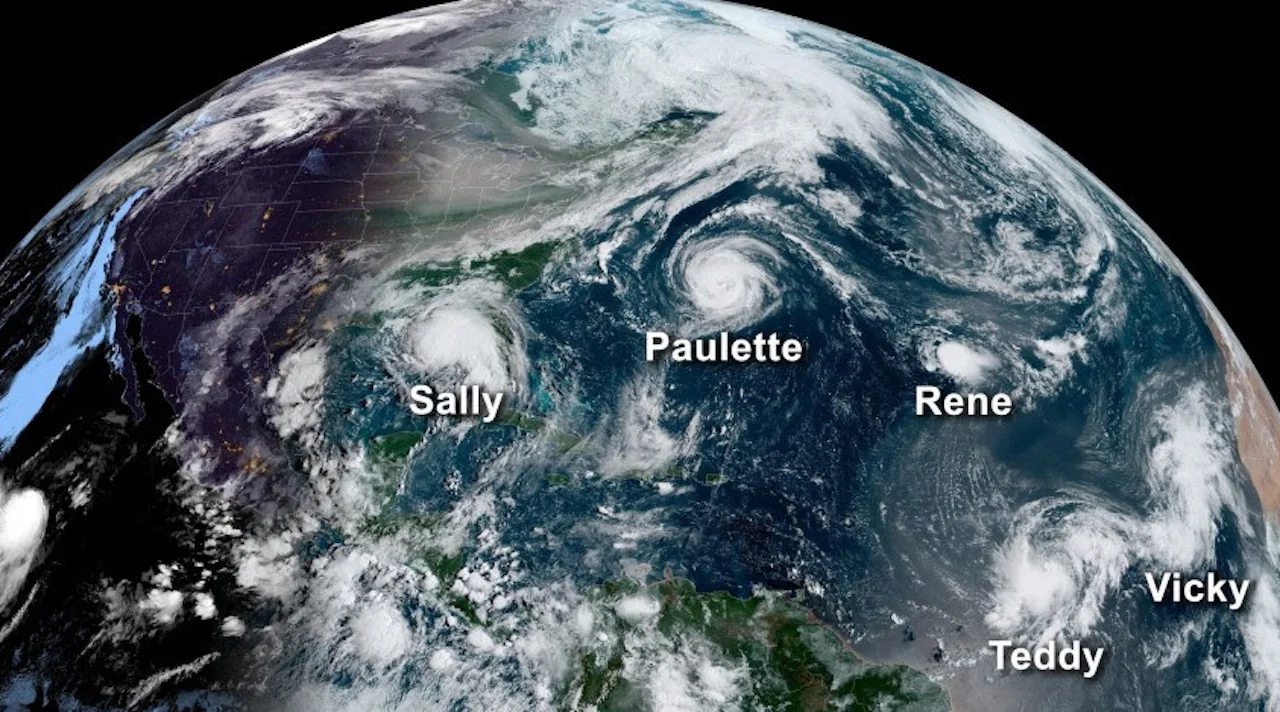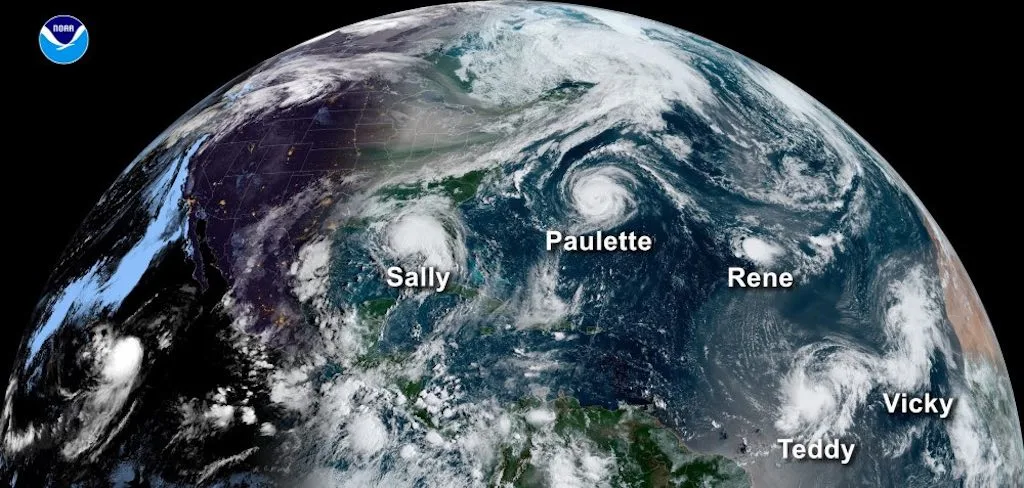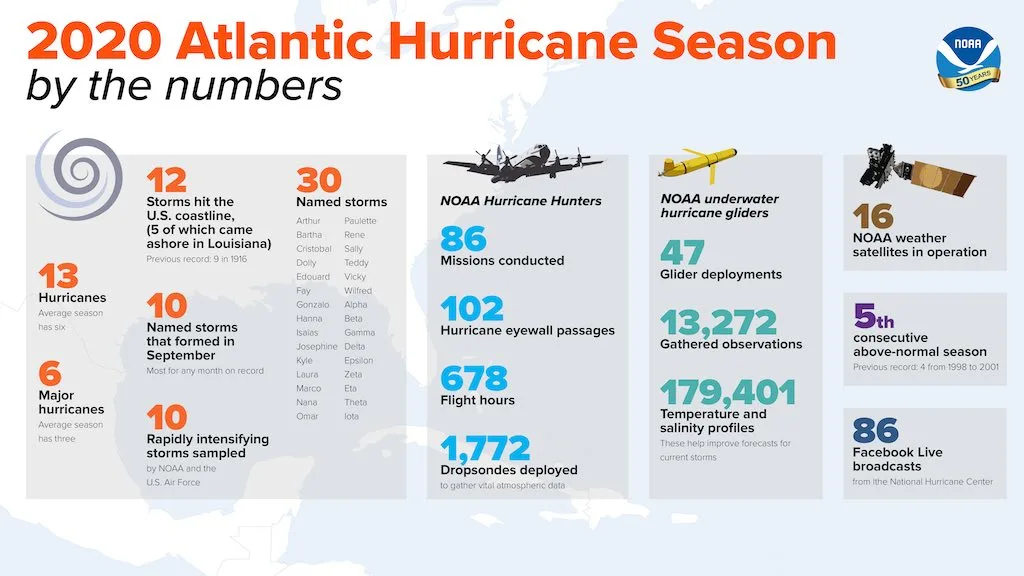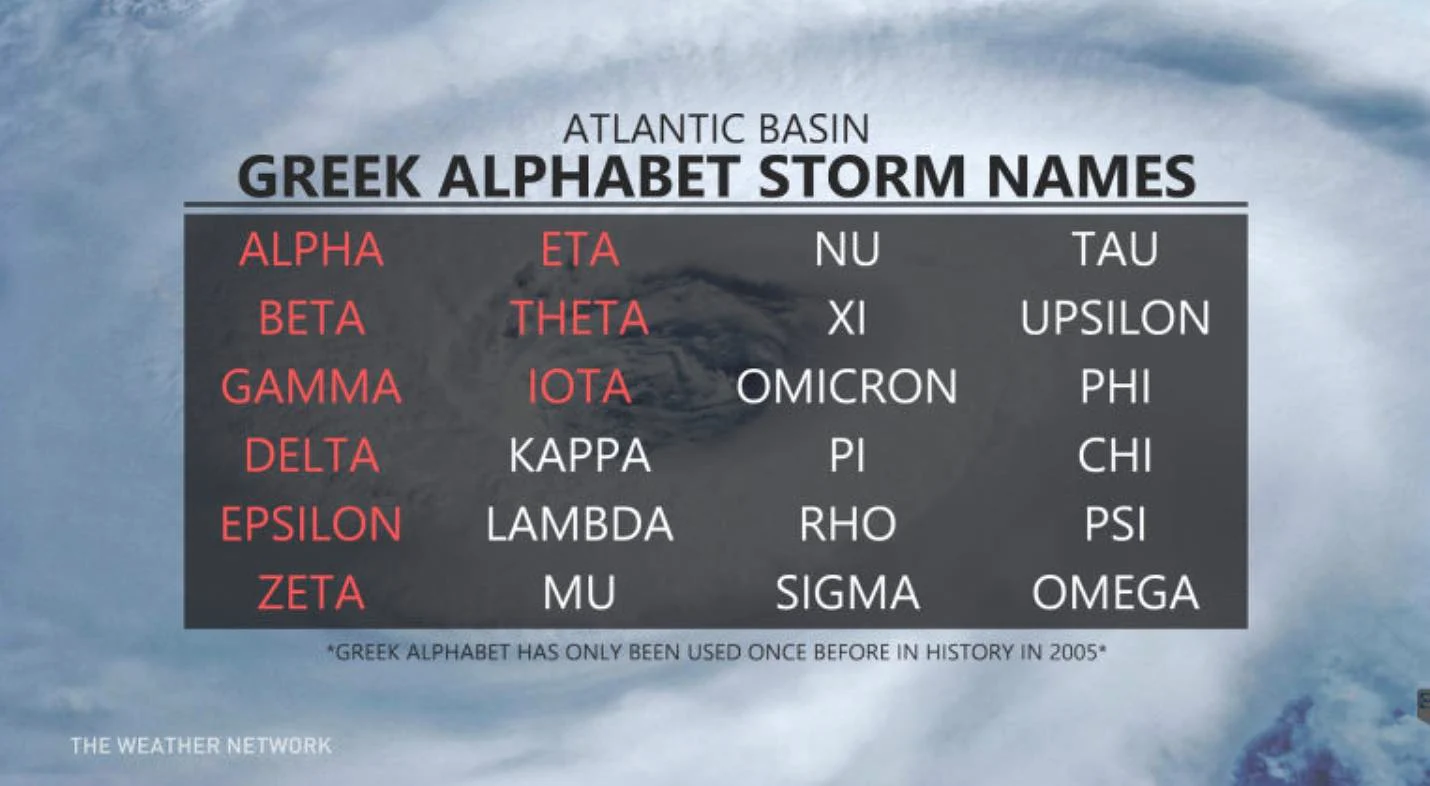
2020 Atlantic hurricane season drawing to a close after historic year
Among the multiple records shattered, the 2020 Atlantic hurricane season produced 30 named storms -- the most ever -- surpassing 2005's tally of 28.
As the record-breaking 2020 Atlantic hurricane season nears its end, it certainly has lived up to the hype that was predicted before it started -- and thensome.
The National Oceanic and Atmospheric Administration (NOAA) released an update Tuesday on the current season and how it has shaped up compared to its original outlook issued in the spring. Officially, the Atlantic hurricane season ends on Nov. 30.
RELATED: Theta propels 2020 Atlantic hurricane season into the record books
NOAA’s seasonal hurricane forecast outlined a high likelihood of an above-normal season, with a strong possibility of it being extremely active. In total, the 2020 season produced 30 named storms (with top winds of 62 km/h or greater), of which 13 became hurricanes (top winds of 119 km/h or greater), including six major hurricanes (top winds of 178 km/h or greater). The tally represents the most storms on record, surpassing the 28 from 2005, with the second-highest number of hurricanes on record.

Image from NOAA's GOES-16 satellite on September 14, 2020, shows five tropical systems spinning in the Atlantic basin at one time. From left to right: Hurricane Sally in the Gulf of Mexico, Hurricane Paulette east of the Carolinas, the remnants of Tropical Storm Rene in the central Atlantic, and Tropical Storms Teddy and Vicky in the eastern Atlantic. A total of 10 named storms formed in September 2020 — the most for any month on record. Photo: NOAA
“The 2020 Atlantic hurricane season ramped up quickly and broke records across the board,” said Neil Jacobs, acting NOAA administrator, in the news release. “Our investments in research, forecast models, and computer technology allowed forecasters at the National Weather Service, and its National Hurricane Center, to issue forecasts with increasing accuracy, resulting in the advanced lead time needed to ensure that decision makers and communities were ready and responsive.”
The season was active right from the get-go, as an early and rapid pace yielded a record nine named storms from May through July. Not only that, it quickly exhausted the 21-name Atlantic list when Tropical Storm Wilfred formed on Sept. 18.
For only the second time in history, the Greek alphabet was used for the remainder of the season, extending through the ninth name in the list, Iota. As well, the record-tying storm, Eta -- from the seventh letter of the Greek alphabet -- was the first storm in history to be given that moniker.

Breakdown of the record-breaking 2020 Atlantic hurricane season. Photo: NOAA.
Another interesting figure from this year's 2020 season is the number of named October storms. Based on 30-year climatology (1981-2010), the Atlantic basin typically sees two named storms in October. This year had five storms, all in the Greek Alphabet -- Gamma, Delta, Epsilon, Zeta and Eta. Three of those storms became hurricanes and Delta and Epsilon were considered major (Category 3 or higher).
This is the fifth consecutive year with an above-normal Atlantic hurricane season. Of the past 26, 18 have been above-normal seasons. NOAA attributes the increased hurricane activity to the warm phase of the Atlantic Multi-Decadal Oscillation (AMO), which began in 1995.
This has favoured more, stronger, and longer-lasting storms since then. Such active periods for Atlantic hurricanes have historically lingered for about 25-40 years. An average season has 12 named storms, six hurricanes, and three major hurricanes.
IT'S NOT OVER, YET
While this season officially finishes at the end of the month, it is still possible for additional storms to develop.

The 2021 hurricane season will officially begin on June 1, so expect NOAA’s Climate Prediction Center to release its initial seasonal outlook in May.
Thumbnail courtesy of NOAA.






